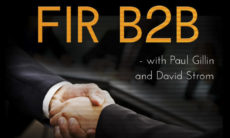Spoiler: this is NOT an email-bashing post.
Many social business practitioners position email as an outdated collaboration tool, and dream of a future without it, where we all communicate more efficiently via the wonders of enterprise social networking in its multiple incarnations. It’s a very appealing vision. After all, email at the workplace has become an ongoing source of stress, so disliking it is easy. Overloaded inboxes and a landfill of junk mail has led some to declare email bankruptcy when coming back from an extended vacation or during busy times at work. A promise that there’s a brighter future ahead (without email) makes us salivate, as several of us still remember the days when communications were based on physical memos written on typewriters. We think of that time before email as happier and simpler: if we just could somehow banish our inboxes, we would be back to our lost paradise. In a way, emails are like the cockroaches of the collaboration ecosystem. Nobody seems to like them, but somehow they have an uncanny ability to survive every single competitor thrown against them. Read on, and you may find that this metaphor is more fitting than you thought.The perception we have about emails has many similarities to the way we see cockroaches. The much-maligned insect, as a result of global commerce and heating in colder climates, is cosmopolitan and can be found in almost any urban environment in the world. They have been around for a long time: the earliest cockroach-like fossils are from more than 300 million years back, predating dinosaurs by almost 100 million years. To put that in perspective, our human ancestors appeared about only 2 million years ago, and anatomically modern humans first showed up much more recently: 200,000 years ago, give or take. There are even claims that cockroaches could survive nuclear holocaust. In summary, they are old, they are everywhere, and they don’t seem to go away.
That would be OK if they were cute like pandas, butterflies, or dolphins. However, because cockroaches are one of the most common household pests, carrying a foul smell and many diseases, we tend to see all that ability to survive as an annoyance. Now, what if we forget for a moment our instinctive distaste towards those ancient critters, and ask ourselves: what are they doing right to make them so resilient?
I have no idea what the answer is in the case of cockroaches, so let’s leave it to actual scientists to deal with that question. But when it comes to email, we probably can have a good guess as to why, for all its age and shortcomings, it became a dominant vehicle in the way we communicate at work. Here are some of the qualities in email that may be behind its longevity:
- Inter-operable – The email protocol is extremely simple, making inter-operability a breeze. No matter if you’re using Notes, Exchange, Gmail or Hotmail, I can send you an email and you can reply without any of us thinking much about the mechanics behind it.
- Ubiquitous – Almost everybody has an account. While in the consumer space there are still users to be conquered, in the workplace context email penetration is very close to 100%.
- Flexible – Email started as a fire-and-forget model, but, thanks to instant notifications, it can play well within a back-and-forth context too. You can process it at your own time, making it great for collaboration across time zones and busy schedules. You can have close-to-real-time conversations, or have those that span months or years like the paper letters from decades ago.
- Integrated – A wide variety of communications and collaboration tools comes with email integration built-in. You can get notifications about important events, publish new content and even participate of online discussions just by having an email account.
One of my favorite books of all time is an obscure one by a Brazilian writer: The Passion According to G.H., by Clarice Lispector. Here’s a summary of it, based on Wikipedia (I apologize in advance for the graphic aspect of it, but that’s key for the message I’m trying to convey here):
The work takes the form of a monologue by a woman, identified only as G.H., telling of the crisis that ensued the previous day after she crushed a cockroach in the door of a wardrobe. (…) she opens the door to the wardrobe. Terrified by the cockroach she sees emerging, she slams the door shut, severing the cockroach in its centre, and sees the still-living animal’s entrails begin to ooze out. G.H. is appalled by the sight, but she is trapped in the room by the irresistible fascination of the dying insect. She wants to scream, but she knows it is already too late (…). Staring at the insect, her human personality begins to break down; finally, at the height of her mystic crisis, she famously takes the matter oozing from the cockroach—the fundamental, anonymous matter of the universe, which she shares with the roach—and puts it in her mouth.
There are hundreds if not thousands of explanations by academics for what that scene actually means. My simplistic interpretation is: to overcome the fear or the hatred of a metaphorical cockroach, you may have to eat the cockroach.
This lesson applies to social business and its love/hate relationship with emails. Many of the leading platforms are starting to bring business email to the social fold, but may be missing the point. For social platforms to even dream about becoming the de facto vehicle carrying most of our collaboration and communications at the workplace, rather than adding email to their arsenal, they should actually “eat the oozing matter” from email– figuratively speaking. Social platforms should evolve to become inter-operable, ubiquitous, flexible and integrated.
Above it all, they should aspire to be simple and transparent to the end user. A full transition from the age of email to the era of social business will only happen once users can speak the “language” of social (streaming, sharing, liking, posting, rating) with the same proficiency they talk “emailish” (To:, CC:, BCC:, attach). Emails will go away when their replacement can be as good as they are.
Main image: photo credit: Scott Beale via photopin cc




